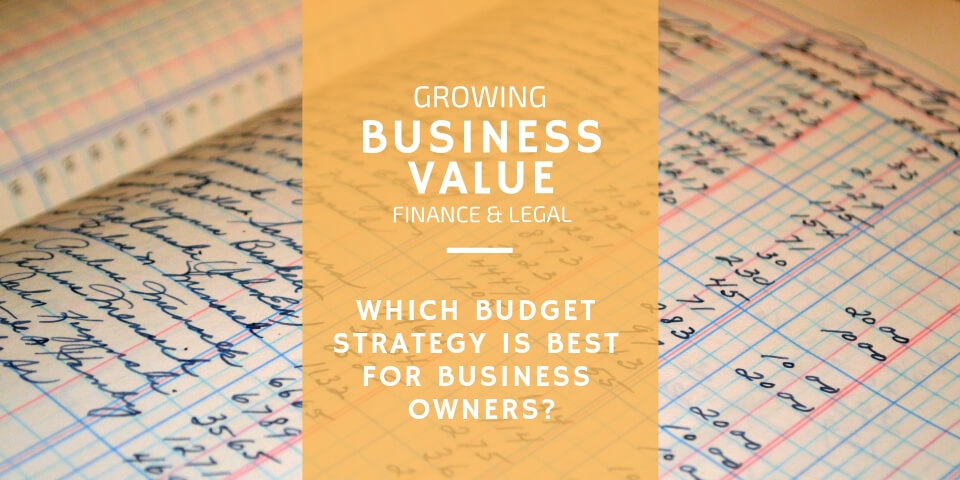
How to Streamline Your Accounts Payable Process
March 20, 2019
Zero-Based or Incremental… Which Budget Strategy is Best for You?
March 25, 2019Profit and Loss: Reading Your Company’s P&L Statement

Often, business owners typically look at their Profit and Loss Statement at the end of the year. And while they may glance over the report, entrepreneurs know that P&L Statements are important to the “financial guys.” However, most business owners don’t know how to read the reports. If you are one of those business owners, then you are crippling your financial department. Without your P&L’s story, you cannot create a transformative business budget nor can you build a pro forma. So today, let me show you how to read a P&L Statement.
Podcast Time Index for “How to make Your P&L tell a Story”
00:29 – How to make Your P&L tell a Story
01:20 – More than just a Paper Trail
02:27 – Putting the Pieces Together
02:53 – The Revenue Stream
03:32 – Cost of Goods
04:18 – Gross Profit
04:34 – Expenses
06:07 – Net Income
07:09 – Examining the Revenue Stream
09:58 – Examining the Cost of Goods Sold
11:06 – Examining Your Expenses – Required vs. Discretionary
12:58 – Calculating Your Margin
13:39 – Wrap Up
The Elements of Your P&L Statement’s Story
If you are using bookkeeping software, you should be able to access your Profit and Loss Statement fairly easily. Once you pull up the report, you can specify which dates you want to analyze. Typically, business owners or CPAs want to see monthly P&L Statements or yearly P&L Statements.
Revenue/Income Stream
At the top of your Profit and Loss Statement, you’ll see the income produced by your organization.
Typically, I ask my clients to allocate their revenue stream according to the major sources of income as they come into the company. For instance, if you own a swimming pool company, you might divide your revenue into pool construction, pool maintenance, pool repairs, pool store sales, etc. If you are a dentist, you might separate your income into preventative services, restorative services, cosmetic services, etc. In a retail environment, you might divide the income you receive into payment types like cash, checks, credit cards, financing contracts, etc. Or if you own an agricultural store (one of my favorite shopping destinations) you may divide the income into department types like hand tools, seed, fertilizer, plants, tractor parts, etc.
Essentially, you’re looking for your revenue leaders. If you know what brings the most income into your business, you can develop marketing plans and budgets around it. However, keep looking through your P&L statement because your revenue leader may not be your profit leader.
Cost of Goods
Underneath your income, you will come to your cost of goods sold. In general, retailers use this category, but many organizations in service industries will also have costs of goods.
Like the revenue stream, I challenge my clients to break goods sold into categories. For example, let’s look at a swimming pool company again. That business can isolate costs of goods into “concrete,” “rebar,” “piping,” etc. Although customers are not buying the concrete, rebar, or piping as retail items, the materials go into the pool builds or repairs for which customers are paying. Similarly, dentists need composite materials, porcelain, gold, etc. to repair teeth. Those materials would be considered “goods” the dentist needs to purchase to do his job. Most simply, though, any goods retail stores purchase for resale are considered cost of goods.
Many times, I see accountants take a lazy approach to this area of company financials and lump all supply costs into a generic “cost of goods” line item. However, if you want to monitor ordering trends so you can negotiate for lower costs with your suppliers, then keeping an itemized list of cost of goods will help you tremendously.
Gross Profit
Next, your P&L Statement will figure your company’s gross profit, which is your total income minus your cost of goods.
Expenses
After gross profit, we come to the section where most business owners focus – expenses. Yet, I challenge my clients to do more than look at their different expenses. I want them to break them into mandatory or discretionary expenses.
In your business, you will have expenses that you are required to pay – your mandatory expenses. You don’t have a choice about expenses like rent, payroll, taxes, utilities, and the like. However, you have control over other expenses like phone and Internet, certain Insurance premiums, office supplies, meals, entertainment, and the like. You determine how much you spend on those things, or you can shop for better rates.
Ultimately, by identifying your discretionary expenses, you can determine whether or not you are wasting money or could save money. You can make a game plan to reduce your discretionary expenses systematically over the next year, thus creating more net earnings or more profit margins in your business.
Net Income
After you list all of your expenses, you will find your net income. This is your gross profit minus your expenses. Essentially, it’s the actual profit you make throughout the year.
With this number, you can determine your company’s profit margins. For instance, let’s say that you are producing $100,000 gross profit each year and have $75,000 of expenses. Your net earnings would be $25,000, which is a 25% profit margin.
RELATED CONTENT: What to look for when choosing a Certified Public Accountant
Conclusion
Now I realize that I’ve just overly simplified many complex financial concepts. But ultimately, I want you to be able to read your P&L Statement so that you can identify what makes your business money and what takes your business’s money. With that information in hand, you can create a business budget and build your pro forma financial statement.



